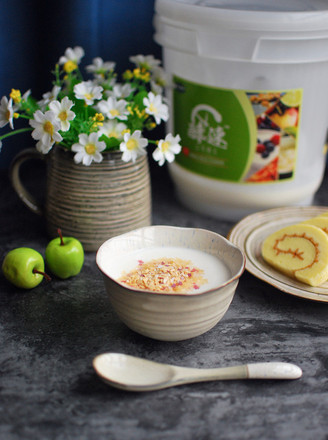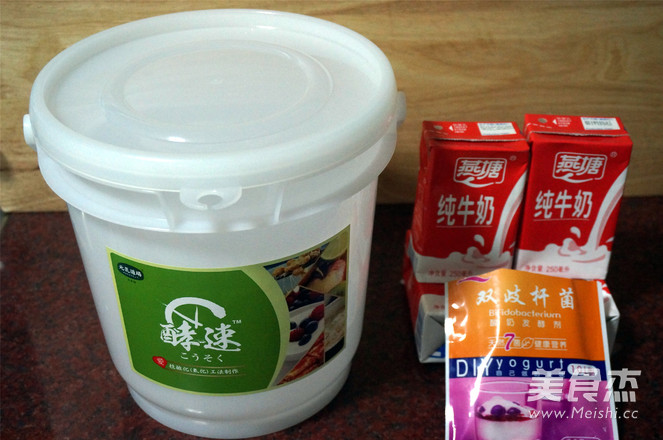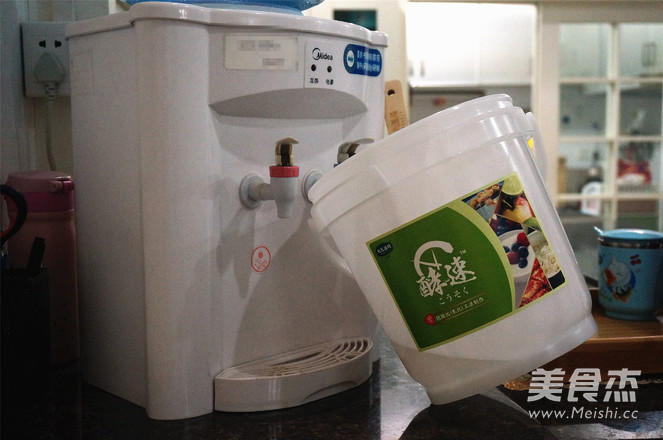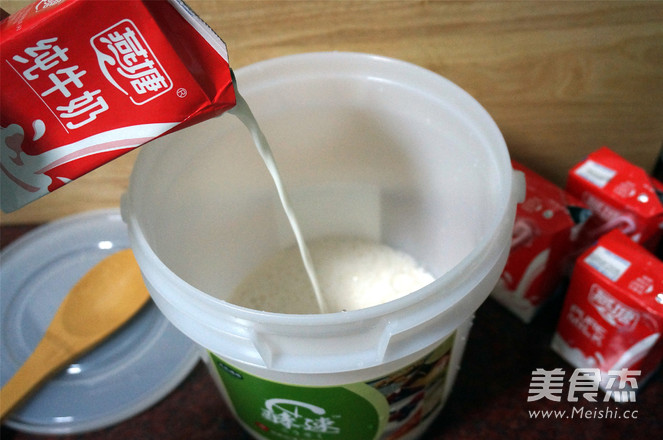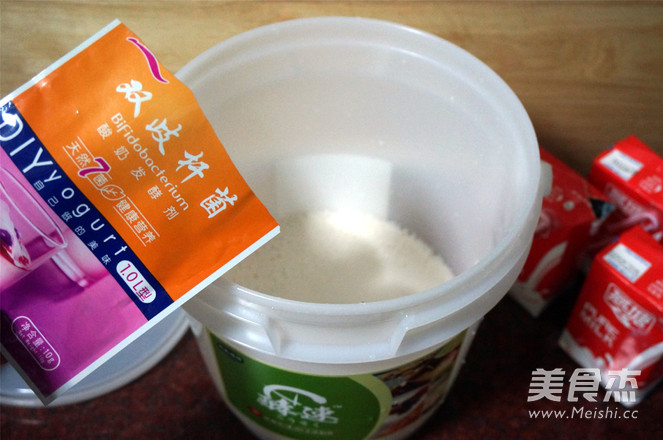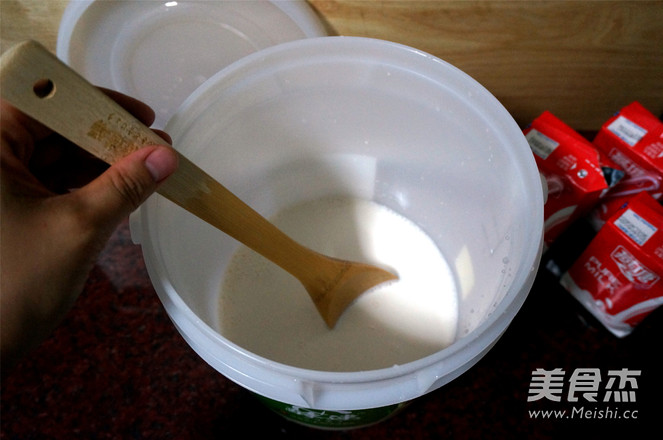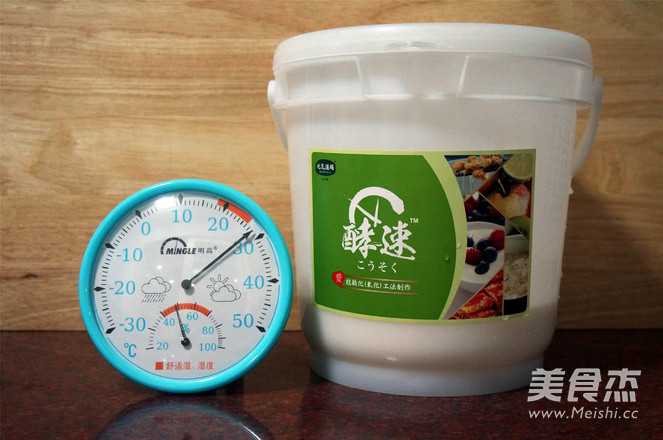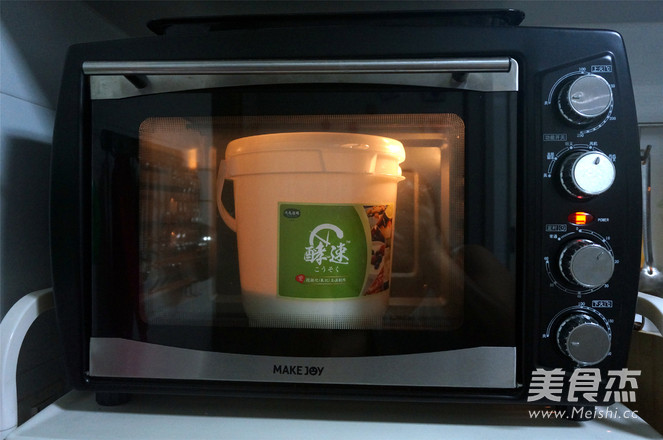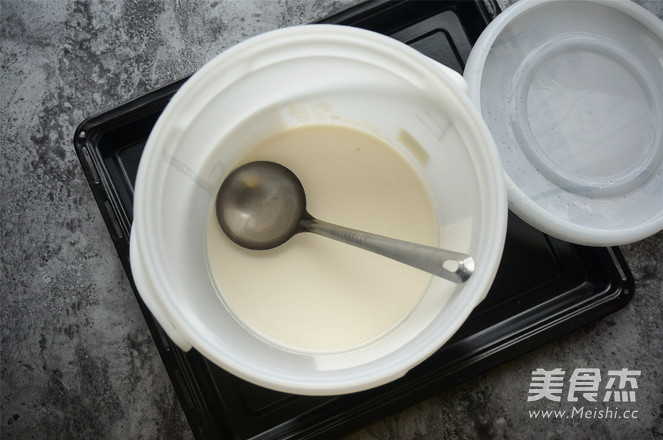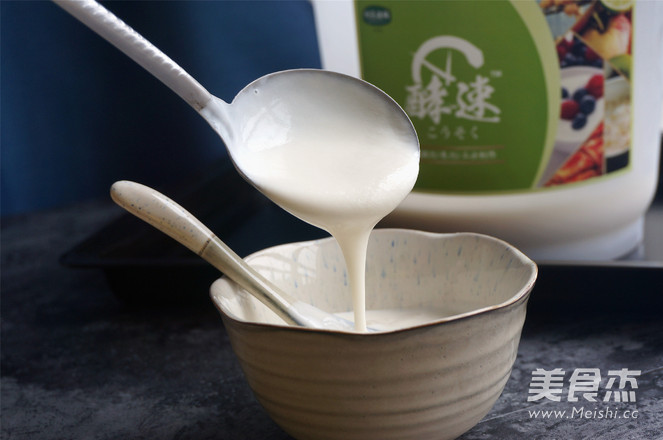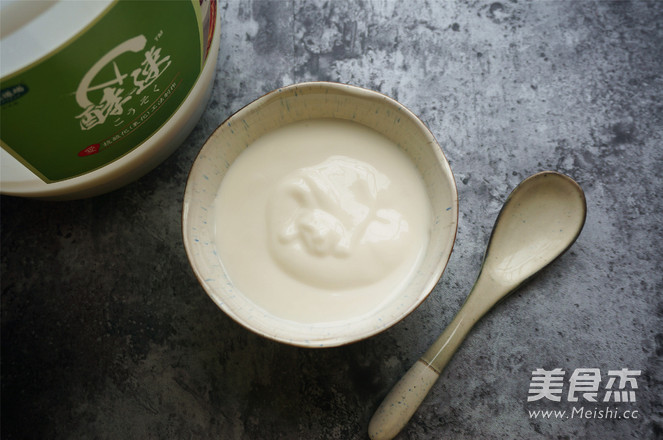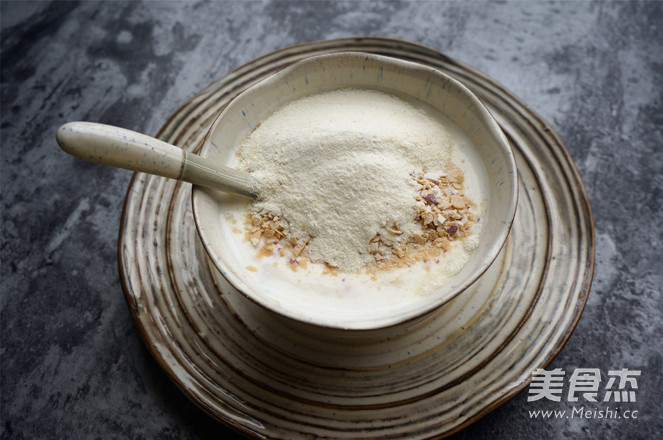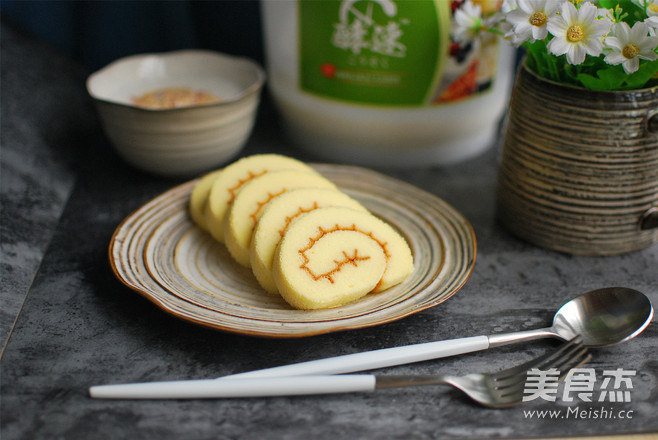Yogurt Diy at Room Temperature
1.
Preparation: 1 liter of pure milk at room temperature, 2 grams of yogurt fermentation bacteria. Prepare a fermented barrel.
2.
First clean the stirring rod and barrel with running water, and then rinse the inner barrel again with drinking water. Do not disinfect with boiling water, which will damage the plastic material.
3.
Add pure milk to the bucket.
4.
Add 2 sachets of yogurt bacteria powder (1 gram 1 sachet, this time 1 liter of milk is put into 2 grams of bacteria powder, in order to achieve a better fermentation effect and make up for the lack of inherent temperature conditions).
5.
Use the matching stirring rod to gently stir clockwise a few times to distribute the bacterial powder evenly into the pure milk.
6.
Cover the lid, place it in a warm room (room temperature 28 degrees Celsius, humidity 50%), and ferment for 24 hours.
7.
In winter or when the room temperature is low, you can put it in the oven and ferment at a constant temperature of 40 degrees for 8 hours.
8.
Drink the fermented yogurt in a hurry, put it in the refrigerator and passivate it for more than 4 hours. This post-ripening period makes the yogurt thicker. After a night of refrigerated yogurt, the spoon can be lifted up, spooned into the bowl, and the lines are pulled out.
9.
Spoon a bowl to taste, thick and smooth.
10.
Just look at the lines and you can feel it.
11.
Suggested way to eat: Add a bowl of sugar-free thick yogurt to a pack of three-in-one oatmeal, mix well and eat, delicious and fruity.
12.
Those who love baking, you can also use this sugar-free yogurt to make cakes. Cake roll recipe: 70 grams of low-gluten flour, 60 grams of fine sugar, 38 grams of corn oil, 100 grams of unsweetened thick yogurt, 4 eggs, bake at 160 degrees and the upper and lower heat for 15 minutes, then turn the heat to 190 degrees (low heat) No change), bake for another 5-10 minutes, and roll it up while it's hot.
Tips:
In summer or when the temperature is high, it can be fermented directly at room temperature for about 24 hours. In winter or when the temperature is low, it can be fermented in an oven for about 8 hours.

